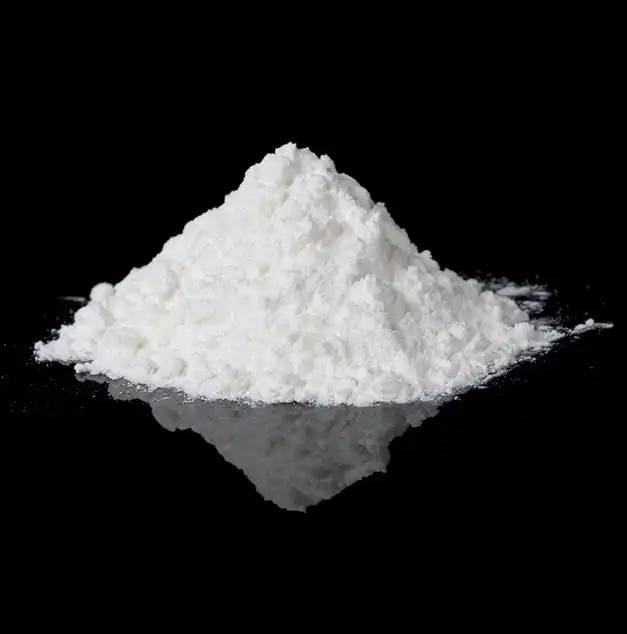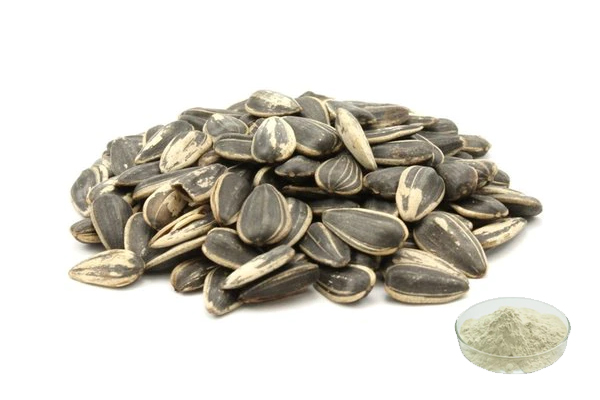DL ATocopheryl Acetate 1161IU
CAS No.:52225-20-4
Specification:1161IU
Testing Method:GC
Appearance:White Powder
Pesticide Residue:Comply with (EC) No 396/2005 Standard
- Description
- Data Sheet
- Certificate
-
What is DL ATocopheryl Acetate?
Dl A Tocopheryl Acetate(vitamin E) is a general term for tocopherol (T) and trienyl tocopherol (Tocotrienol, T-3), which are fat-soluble vitamins. DL-α-tocopherol acetate is widely found in animal and plant foods, with animal foods being predominantly of the da type. Vegetable oils contain more DL-α-tocopherol acetate, which parallels the content of linoleic acid and other polyenes. DL-α-tocopheryl acetate is an antioxidant for polyadenylated fatty acids, which combines with membrane phospholipids of polyunsaturated fatty acids (PUFA) to stabilize the structure of the membrane, preventing the PUFA on the biofilm and enzymes containing sulfur radicals in the cell from being damaged by oxidants. When DL-α-tocopheryl acetate is deficient, PUFA on the erythrocyte membrane is prone to peroxidation, causing damage to the erythrocyte membrane and hemolysis.
Green Spring Technology supplies high purity DL A Tocopheryl Acetate 1161IU, low impurity content, high absorption rate, strong biological activity, comprehensive functions, good safety, good palatability, and long storage time.
Established in 2000, Green Spring has been committed to providing customers with natural, safe, and organic plant extracts. We organizes its production following ISO, HACCP, and other quality standards, and has established a perfect traceability system, all products can be traced, and each product from source to finished product has a detailed test, and production report, to ensure that every link in the production process can be controlled and checked. We have obtained Halal, Kosher, COSMOS, BRC, IFS, FDA, ISO, and many other certifications. We can provide authoritative third-party test reports.
Specification:
Product Name
DL ATocopheryl Acetate
CAS No.
52225-20-4
Specification
1161IU
Testing Method
GC
Appearance
White Powder
Pesticide Residue
Comply with (EC) No 396/2005 Standard
Regulations:
It conforms to EU regulations.
Looking for a Quotation?Benefits:
Antioxidant
As a fat-soluble antioxidant, tocopherols are mainly found in cell membranes, trapping free radicals occurring from lipid oxidation and providing some antioxidant effects. Scientific studies have found that a mixed fraction rich in α-trienyltocopherol extracted from palm oil is a better antioxidant, with an antioxidant activity 40-60 times higher than that of α-tocopherol, and can more effectively scavenge free radicals from lipid cell membranes, thus slowing down aging.
Fertility Promotion
Tocopherol acts on the anterior pituitary gland and promotes the secretion of gonadotropic hormones, thus affecting the development of the reproductive system and the formation of germ cells, clinically preventing habitual abortion and preeclampsia, as well as preventing male infertility.
Anti-Tumor
Tocopherol can intervene in the signaling pathways of cancer cells, and down-regulate the expression of pro-cancer or anti-oncogenic genes, thus producing anti-cancer and anti-cancer effects by inhibiting the proliferation of tumor cells and promoting apoptosis of tumor cells.
Skin Whitening
Tyrosinase plays a decisive role in the formation of melanin by melanocytes. Tocopherol vitamin E's side chain is directly involved in the redox process of sulfhydryl groups, which can inhibit tyrosinase activity, so that tyrosine can not continue to participate in the synthesis, reducing the formation of melanin. Vitamin E Tocopheryl Acetate can also promote the formation of brown spots lipofuscin oxidation decomposition, accelerate the degradation of melanin, can inhibit the formation of pigmented spots, age spots, prevention and treatment of acne pigmentation. At the same time, it can promote the delivery of nutrients and the excretion of metabolic waste in the body, which is conducive to the repair and removal of pigmentation spots.
Lowering Blood Cholesterol
High blood cholesterol level is one of the causes of cardiovascular diseases. Some scientific studies have found that trienyltocopherol can achieve cholesterol lowering effect by inhibiting the activity of reductase in the liver. It is also effective in reducing the amount of cholesterol synthesis intermediates in the liver tissues, thus reducing the synthesis of cholesterol.
Prevents Atherosclerosis
Scientific studies have found that tocopherols can inhibit lipid peroxidation of cell membranes, increase the antioxidant capacity of low-density lipoproteins (LDL), reduce the production of high-density lipoproteins (HDL), and protect low-density lipoproteins (LDL) from oxidation. Trienyltocopherol also inhibits platelet aggregation on the vascular surface and protects the vascular endothelium, and thus is thought to have a preventive effect against atherosclerosis and cardiovascular disease.
Applications:
In Cosmetics:
α-Tocopheryl Acetate has a wide range of applications in toiletry products, especially sunscreen products, and its effects mainly include maintaining skin moisturizing and smoothness, preventing the formation of carcinogens such as nitrosamines, and synergistically used with sunscreens to protect against UV-induced damage to the DNA of skin cells, the membrane system, and the immune system, etc. DL ATocopheryl Acetate has a wide range of applications in the cosmetic industry as an antioxidant and nutrient and is also widely used in the cosmetics industry. DL ATocopheryl Acetate is also widely used in the cosmetic industry as an antioxidant and nutrient.
In the Food Field:
Vitamin E tocopherol can be used as an antioxidant in prepared milk (Food Classification Number: 01.01.03) at a maximum use level of 0.2 (g/kg). Vitamin E as an antioxidant has been included in the National Standard for Food Safety, Standard for the Use of Food Additives (GB 2760), and is permitted to be used in fried noodle products, convenient rice noodle products, compound seasonings, puffed food and other food categories.
Approved for expanded use on February 7, 2023, for batters (e.g., drag batters for fish and poultry), breading, and frying powders (food category 06.03.02.04) Used to slow down oxidative discoloration of food. The U.S. Food and Drug Administration, Japan's Ministry of Health, Labor and Welfare, and others allow its use in food as an antioxidant. According to the evaluation results of the Joint FAO/WHO Expert Committee on Food Additives (JECFA), the acceptable daily intake (ADI) of this substance is 0.15-2 mg/kg bw. Its quality specification follows the National Standard for Food Safety, Food Additives, and Vitamin E (GB 1886.233).
For Health Products:
D-alpha-tocopherol succinate can be used as an active ingredient in health supplements for improving the body's antioxidant capacity and preventing the occurrence of various diseases. This nutraceutical is suitable for people of all ages, especially the elderly, athletes, and other people who need to improve their antioxidant capacity.
-
Download
DL ATocopheryl Acetate 1161IU COA


 English
English French
French Spanish
Spanish Russian
Russian Korean
Korean Japanese
Japanese









